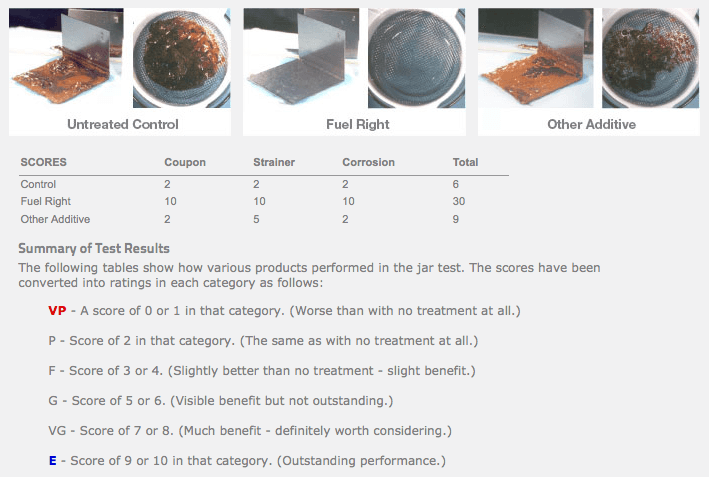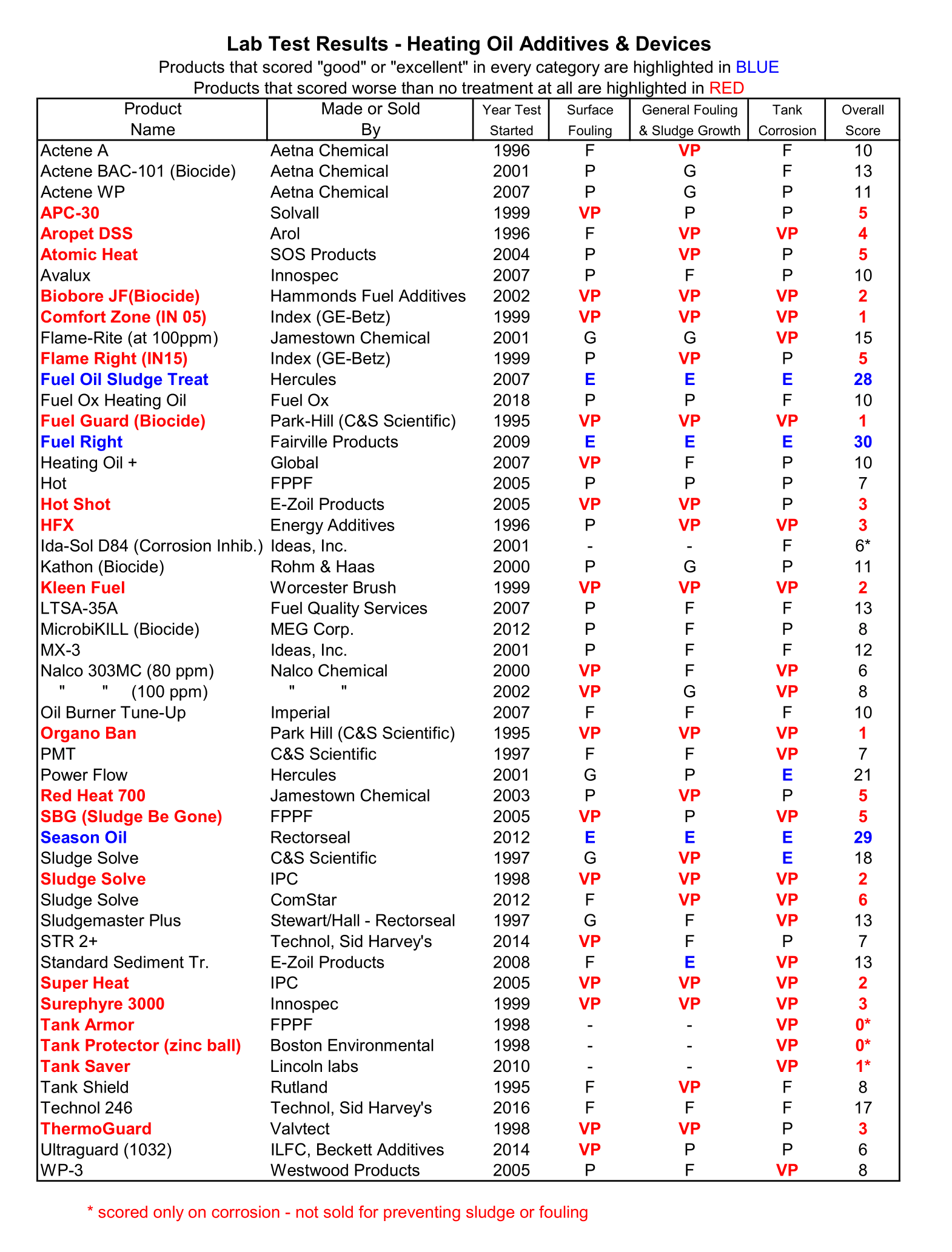Call Us: (302) 425-4400
TEST RESULTS
FUEL RIGHT BENCH TEST - SEE HOW WE STACK UP TO THE COMPETITION

ORIGINAL SAMPLE
Fuel Sample On Right Treated With Fuel Right
Fuel Sample On Right Treated With Fuel Right

24 HOURS
AFTER TREATMENT
AFTER TREATMENT

7 DAYS
AFTER TREATMENT
AFTER TREATMENT

21 DAYS
AFTER TREATMENT
AFTER TREATMENT
SEE THE RESULTS FOR YOURSELF!
How It Works
Glass jars are filled with fuel oil or diesel fuel, a small amount of water, a steel panel or "coupon", and a small amount of sludge. One jar serves as the "control" and receives no additive. Each of the other jars is treated with an additive at the manufacturer's recommended dose. The jars are then loosely capped and placed in a dark box or closet.
Once a month the jars are opened, most of the fuel is removed and replaced with fresh fuel, and the jars are re-treated with their respective additives. This process is repeated until, after 12 to 18 months, the "control" coupon has become well fouled. At that point all jars are compared and scored based on:
1. Fouling of the coupon surfaces
2. Corrosion of the coupon (by weight loss)
3. General growth of sludge (determined by pouring contents through a strainer)
Each jar is scored on a scale of 0-10, with the "control" scoring a "2" in each category. In any category, a score of less than "2" indicates the additive was actually worse than no treatment at all and a score of "10" indicates that additive was perfect in that regard. Below is an example of a typical result:

When using this information, we recommend that you look for products that score high in the categories of interest to you. For instance, if you are interested in less sludge fouling but don't care about whether tanks are corroding, focus on the fouling categories. In general, the product(s) with the higher ratings should be expected to perform better in the field.
The results you see here represent the newest results we have. "Newer" versions of some products are slated for testing in the next few months, and we'll update our results as they become available.
The results you see here represent the newest results we have. "Newer" versions of some products are slated for testing in the next few months, and we'll update our results as they become available.
Contact Us
Fairville Products, Inc
Fuel Right
41 Germay Drive,
Wilmington, DE 19804
Phone: (302) 425-4400
Email: sales@fuelright.com
Web: http://FuelRight.com
Upcoming Events

VISIT US! NOVEMBER 12 - 14
2024 International Workboat Show
Booth #1660
Morial Convention Center
New Orleans, LA
CLICK HERE FOR DETAILS



